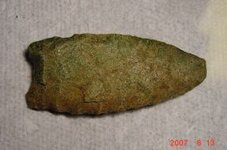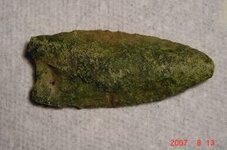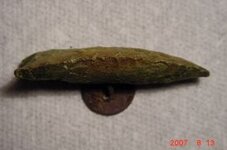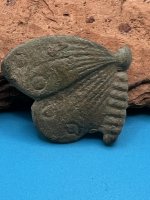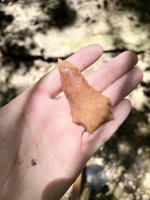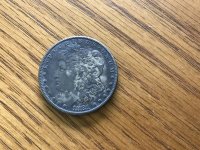FMarion2ndRegSC
Jr. Member
- Sep 14, 2006
- 97
- 3
Hi guys. I found this today diving an old river bank. It is worked so that it is curved in appearance. It looks to be intentional or maybe unfinished, but the edges look very refined. What do you think??
Attachments
Upvote
0


